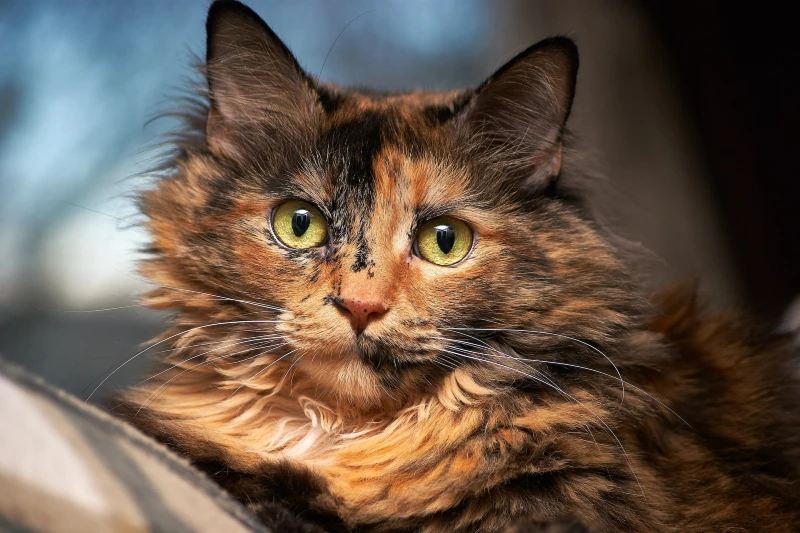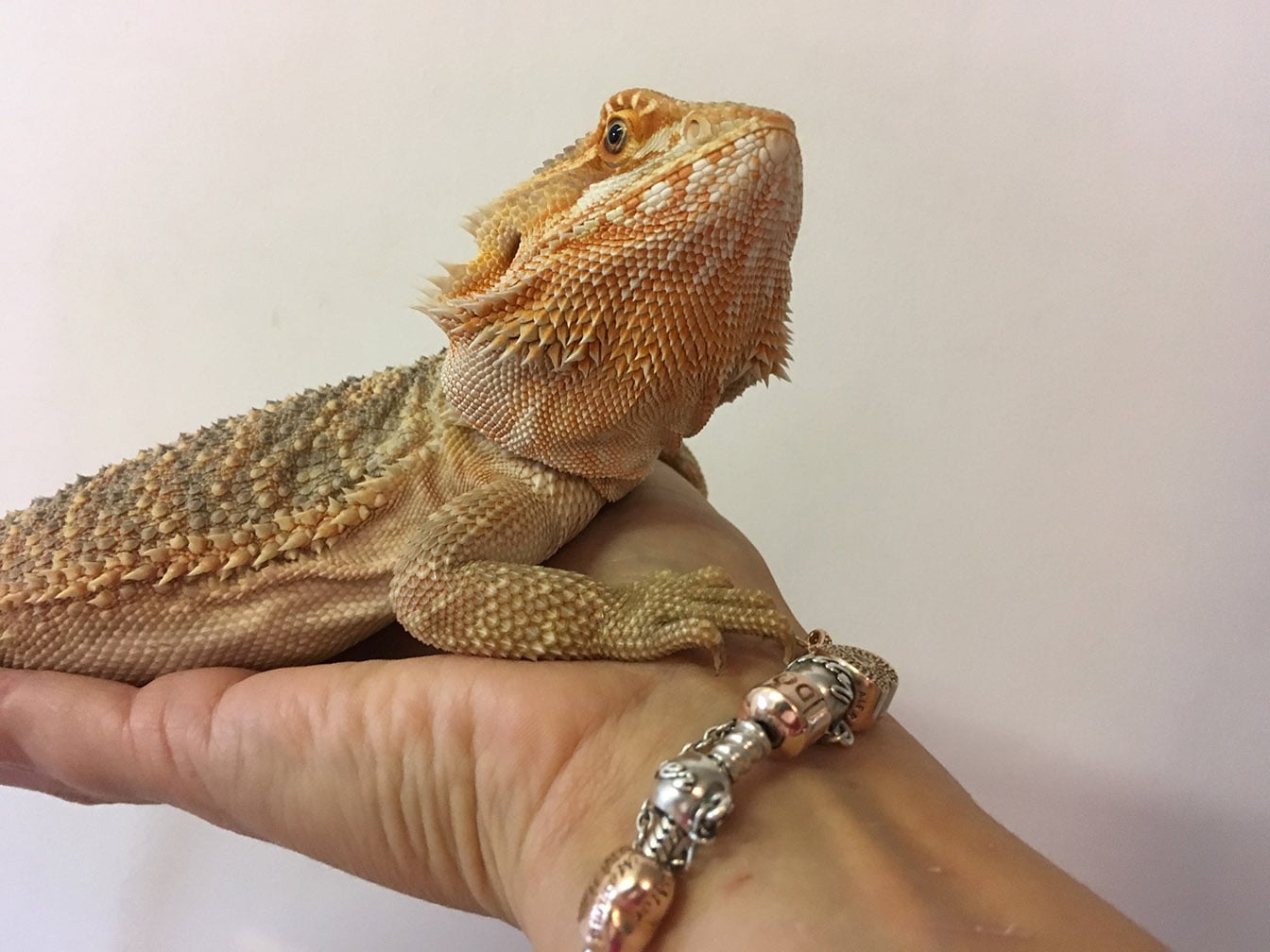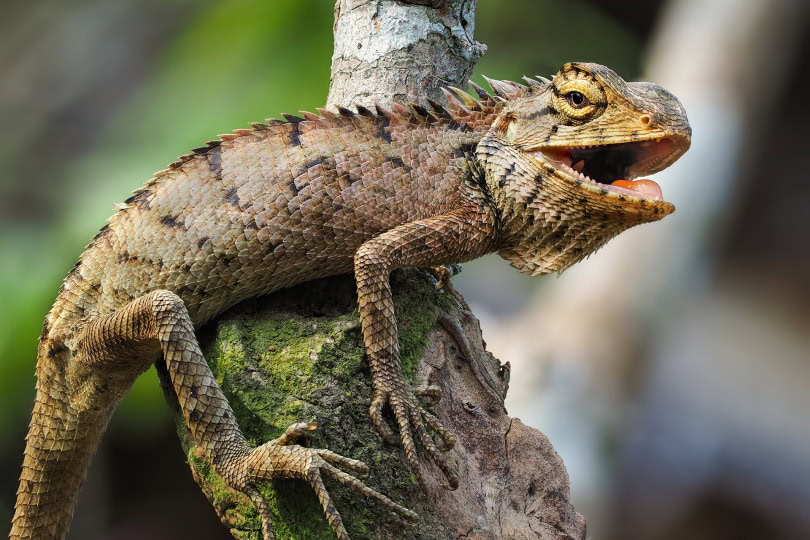VET APPROVED

The information is current and up-to-date in accordance with the latest veterinarian research.
Learn more »Click to Skip Ahead
Our understanding of veterinary medicine and science is advancing further than ever before, and with that comes the ability to extend our cat’s lifespans and improve their quality of life. The lifespan of any cat can depend on uncontrollable factors, such as breed and genetic predispositions. However, many controllable factors, such as lifestyle, exercise, preventative veterinary care, and diet, may influence your cat’s lifespan.
Tortoiseshell cats are not a breed, but a specific type of feline coat coloring. You can expect an average tortoiseshell cat to live up to 12-14 years. To learn more about the Tortoiseshell cat’s lifespan, keep reading below.
What’s the Average Lifespan of a Tortoiseshell Cat?
First of all, it’s important to understand that Tortoiseshell cats, or Torties, are not a cat breed. Many cat breeds can have a Tortie coloring variety, and most Tortoiseshell cats are actually females. This is because the gene that determines the color of the coat, in this case black and orange, is linked to the X chromosome.1
On average, Tortoiseshell cats live anywhere from 12–14 years. Still, several influencing factors could cause your Tortoiseshell cat to have a longer-than-average lifespan.
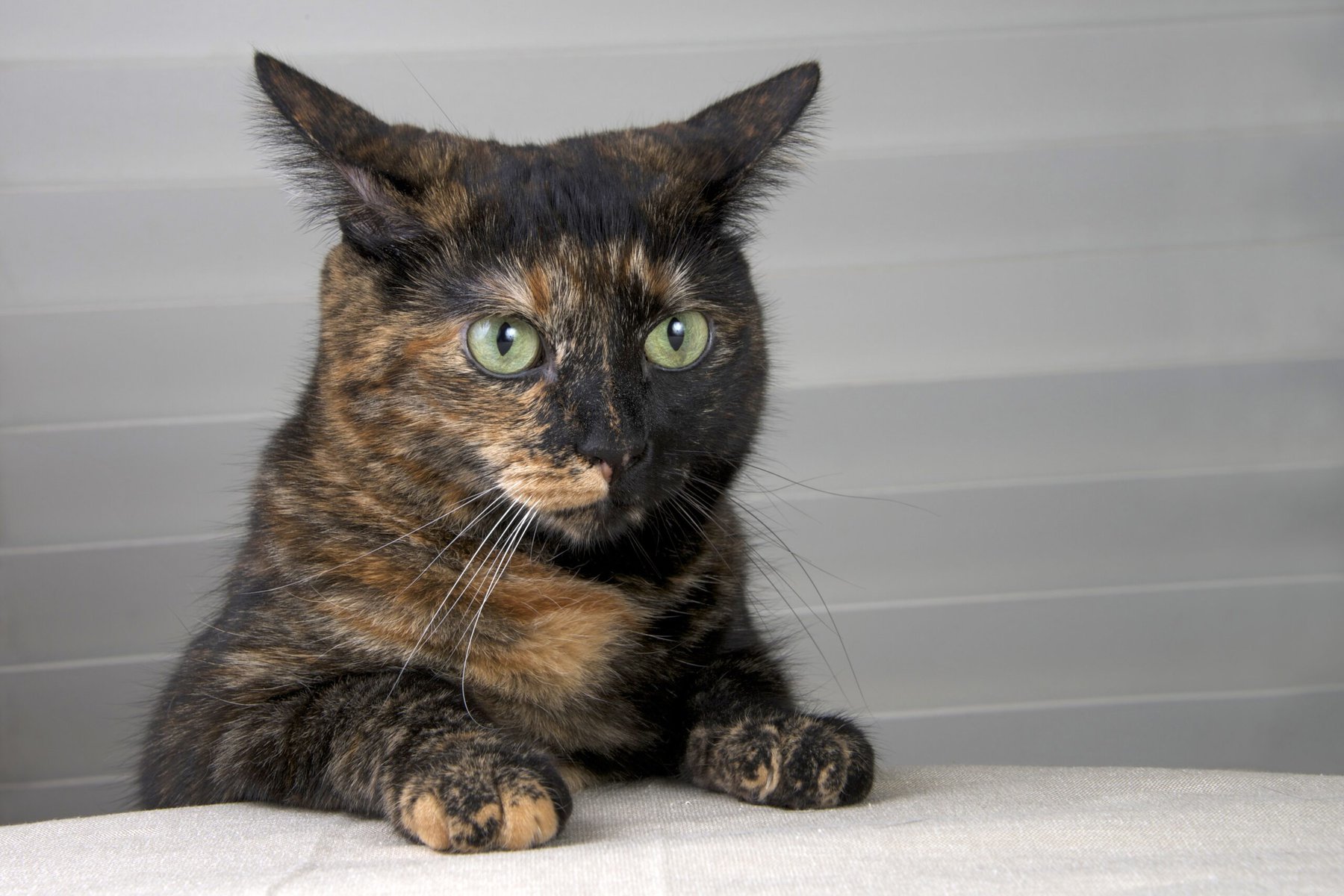
The 6 Factors That Can Influence Longevity
1. Nutrition
Your Tortoiseshell cat’s diet significantly contributes to the length of your cat’s lifespan, and it is one that you can control. A high-quality, balanced diet will likely lead to your cat living a longer, healthier life. On the other hand, a poor or imbalanced diet can lead to health complications.
2. Environment and Conditions
The cleanliness of your cat’s environment and living conditions can contribute to a longer, happier life. If your Tortoiseshell cat lives in a clean, well-kept environment, they may be less likely to develop a respiratory issue or even infections that can negatively impact their health, not to mention, they will feel more fulfilled, particularly in an enriching and stimulating environment.
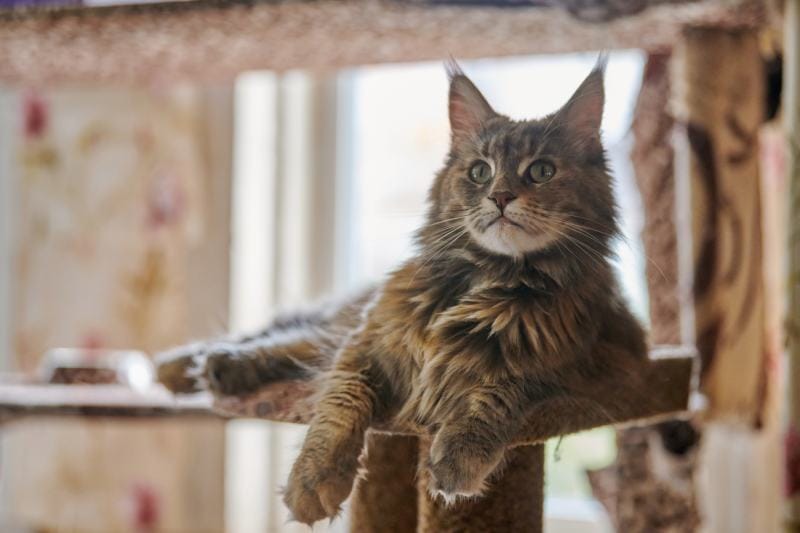
3. Living Space
Whether your Tortoiseshell cat lives indoors or outdoors can also have varying impacts on their lifespan. Indoor cats may be more prone to obesity and boredom, whereas outdoor cats are at a higher risk of contracting infectious disease or suffering attacks from other animals or injuries from a road traffic accident. It also comes down to how well the living space enables cats to express all of their natural behaviors, such as scratching, jumping, running around, pouncing, and stalking. They need to have a selection of scratching posts, cat trees, perches, interactive toys, and puzzle feeders, particularly if they spend most or all of their time indoors, in order to avoid undesirable behaviors and boredom.
4. Sex
The sex of your Tortoiseshell cat can play a role in determining lifespan. Although male Torties are quite rare, they tend to be sterile, and there isn’t a lot of data on the lifespan differences in such cases. However, in general, female cats seem to have a somewhat longer lifespan, around 1.3 years, based on research conducted in the UK in 2019.
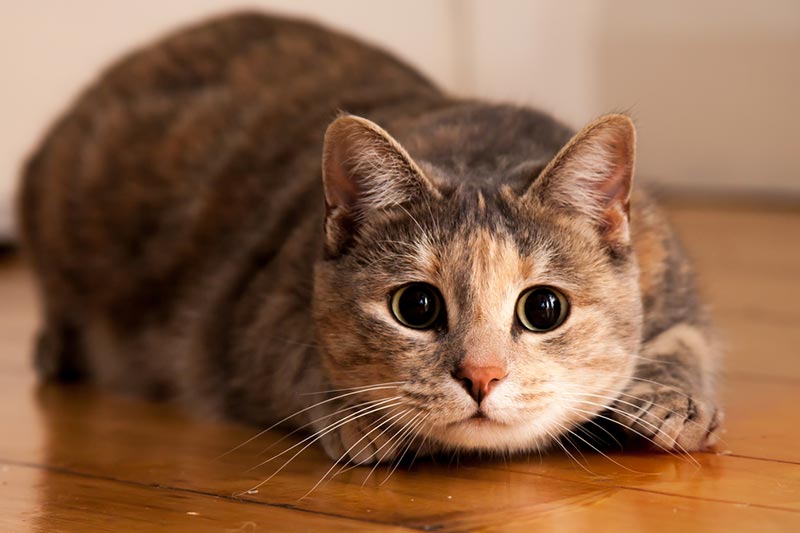
5. Genetic Factors
The genetic history of your Tortoiseshell cat can impact her lifespan. If there is a history or predisposition towards specific health issues in her lineage, then the chances of her developing those same issues may increase, as some of these health conditions are hereditary. They may skip a generation or two, and if your cat’s grandparents had it, there is a chance your cat may develop it as well, despite her parents being healthy.
If you received your Tortoiseshell cat from a reputable, responsible breeder who performs regular health and genetic testing on their cats and avoids inbreeding at all costs, the chances that your cat will develop genetic conditions should be lower.
6. Healthcare
Tortoiseshell cats that are given regular healthcare and are taken to regular check-ups at the vets have a better chance of living long and happy lives. On the other hand, if a Tortoiseshell cat is not receiving the healthcare that she needs, her chances of living a longer life are likely to decrease. Through preventative health checks, vaccinations, deworming, and flea treatment, as well as regular blood work depending on the cat’s age, it’s easier to prevent and detect health conditions early on in order to provide the best possible outcome.
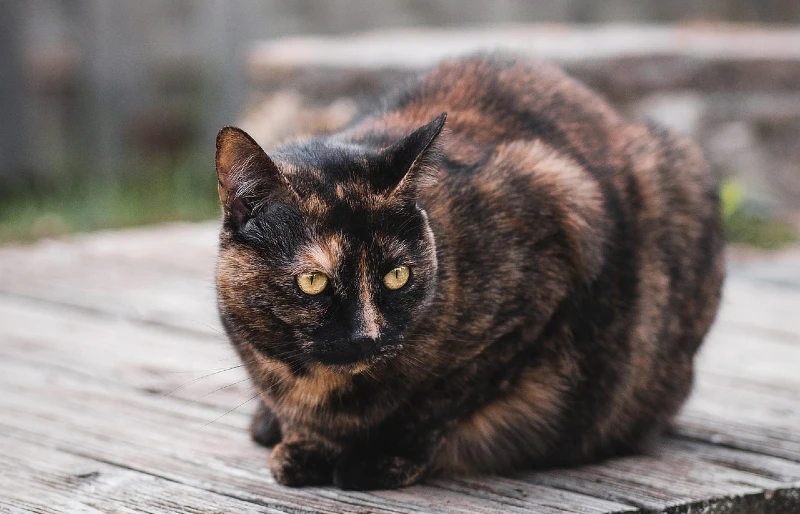
The 6 Life Stages of a Tortoiseshell Cat
1. Kitten
A Tortoiseshell will be in the kitten stage from birth to 6 months of age. Kittens tend to be active, playful, and curious but may also be susceptible to illnesses and infections. While your Tortoiseshell cat is still a kitten, take the time to socialize her and help her grow accustomed to new experiences, and different pets in the home. This is also the time to speak to your vet about the best time to get your Tortie spayed. At this stage, they should have already received their first course of vaccinations as well as regular deworming and flea treatment.
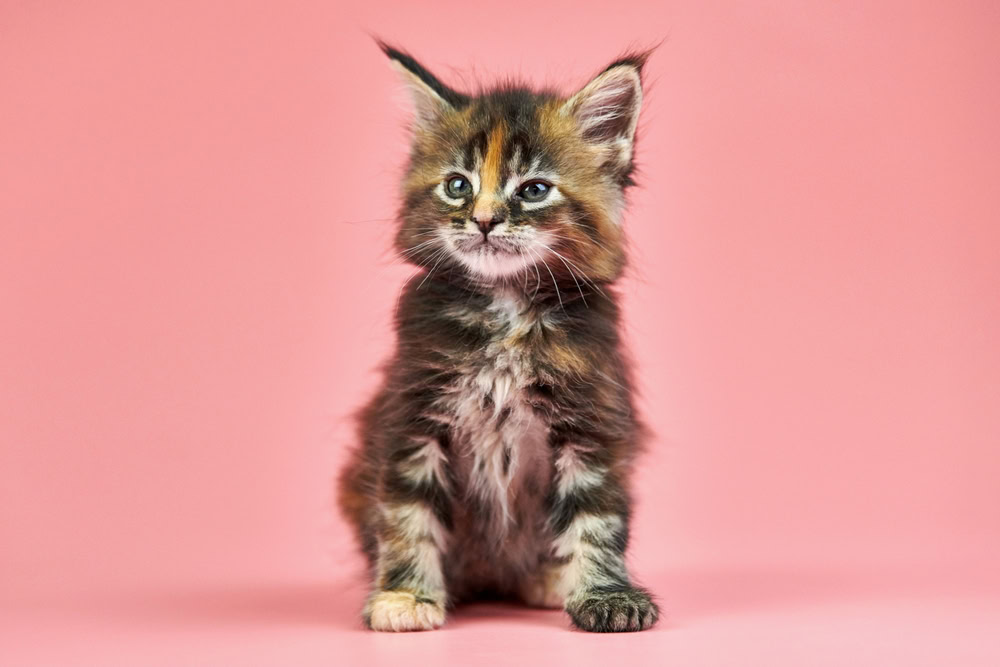
2. Junior
From 7 months of age through your Tortoiseshell cat’s first birthday, she will still be a junior, until around 2 years of age. This is a very exciting time when your kitty reaches their full size and weight, and matures in most ways, depending on their breed. Keep up with their annual check ups and vaccinations, in order to protect your kitty from any potential illnesses, especially if they live in a multicat household or go outside.
3. Adult
From 3 to 6 years of age, your Tortoiseshell cat is considered an adult. Make sure to keep up with regular annual vet checks and vaccinations, according to your vet’s recommendations. Ensure your cat still gets plenty of physical exercise and mental stimulation through an enriched and interactive environment.
4. Mature Adult
Between 7 and 10 years, your Tortoiseshell cat will be a mature adult. You may notice that she is less playful and active than she used to be, so extra weight gain will be something to watch out for. This is also the time when various health conditions may start to develop that may not be obvious, so it’s time to speak to your vet about more regular checks, such as once every 6 months.
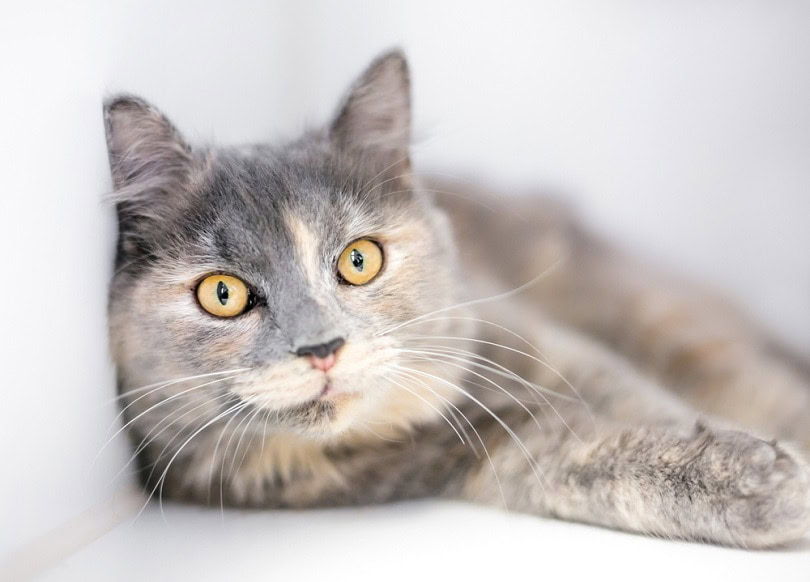
5. Senior
Once your Tortoiseshell cat surpasses 10 years of age, she is officially a senior. Her activity will decrease even more, and she will begin to sleep more. You may also notice an increase in health issues. To keep your elderly Tortoiseshell cat healthy.
6. Super Senior or Geriatric
Over 15 years of age, your cat will become a super senior. This age can also be marked with increased sleeping and reduced activity, but it’s important to ensure your cat’s quality of life remains good. Regular vet checks and keeping up with any recommended treatments is crucial in ensuring they remain comfortable and happy for as long as possible.
 How to Tell Your Tortoiseshell Cat’s Age
How to Tell Your Tortoiseshell Cat’s Age
There are many ways to guess the general age of your Tortoiseshell cat, although it may require a visit to the vet to determine a more specific age. One way you can estimate your cat’s age on your own is to observe her grooming habits. If your Tortoiseshell cat is grooming herself less frequently than usual, it could be due to arthritis or dental issues, which could indicate that she is growing older.
If you take your cat to the vet, your vet can examine her teeth to determine her age. If your Tortoiseshell cat still has kitten teeth, your vet will be able to pinpoint how young she is. If your Tortoiseshell cat is an adult, your vet can examine the wear and tear on her teeth to estimate her age.
Cloudiness of the eyes may be another way your vet can suspect an older age, but this is not always the case. Young cats can also have issues with their eyes, and any sign of cloudiness warrants an urgent vet exam. If your cat is a senior, their eyes may appear slightly cloudy.

Conclusion
Tortoiseshell cats are relatively healthy cats that have the potential to live for a long time. Although certain factors contributing to your cat’s lifespan are out of your control, there are many that you can take charge of, such as healthcare, nutrition, and the environment. As your Tortoiseshell cat grows older, be sure to cater to the needs of whatever life stage she is in. By doing so, you will be able to help her have a long, happy life.
You might also like:
- How Long Do Cats Live? | PetMD
- Feline Life Stages AAHA
- How To Tell How Old a Cat Is | PetMD
- How long do pet cats live? | Blog
- Life tables of annual life expectancy and risk factors for mortality in cats in the UK – Kendy Tzu-yun Teng, Dave C Brodbelt, David B Church, Dan G O’Neill, 2024
- How long do cats live? | Cat life stages | Blue Cross
- Cat care by life stage
Featured Image Credit: Pixabay, Pexels
